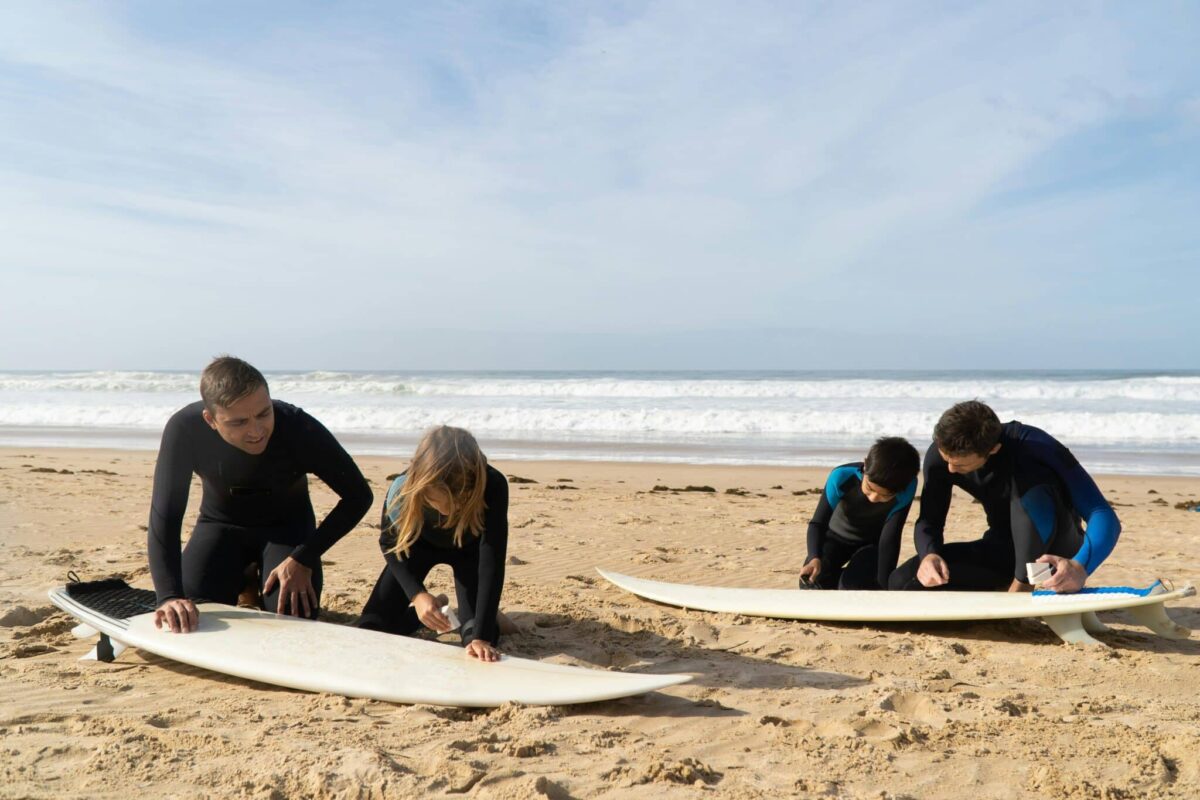
So, you’ve decided to take the plunge and learn to surf? Awesome! Surfing is an incredible experience, but like any sport, it comes with a learning curve.
To help you progress faster and stay safe in the water, Colby Leachman has compiled a list of the top mistakes beginners make and, more importantly, how to avoid them. Let’s get you shredding!
Choosing the wrong board
What beginners often do: They often opt for a shortboard because they see the pros using them. Or, they grab whatever board is cheapest without considering its suitability.
What to do instead: Start with a larger, more stable board. Soft-top longboards or foam boards are ideal for beginners. They offer greater buoyancy, making paddling and catching waves significantly easier. A larger board also provides a more stable platform, helping you find your balance. Renting a board from a surf shop and asking for their advice is a great way to go.
👉Learn how to choose the right surfboard for beginners.
Paddling incorrectly
What beginners often do: They often paddle with short, choppy strokes, wasting energy and not generating much momentum. They might also arch their back excessively, leading to fatigue and potential back pain.
What to do instead: Focus on long, smooth strokes, using your entire arm and engaging your core muscles. Imagine pulling yourself through the water. Keep your body relatively flat on the board to minimize drag. Practice paddling on flat water to get the technique down before heading out into the waves. Efficient paddling is essential for catching waves and getting back out to the lineup.
Surfing in dangerous areas or conditions
What beginners often do: They might head out to a spot with strong currents, large waves, or rocky bottoms before they have the necessary skills. They might also ignore warning signs or advice from lifeguards.
What to do instead: Start at a beach with gentle, small waves and a sandy bottom. Avoid areas with strong currents or rip tides. Always check the surf report and heed any warnings. If you’re unsure about the conditions, ask a lifeguard or experienced surfer for advice. Your safety is paramount.
Dragging your surfboard on the beach
What beginners often do: They often drag their board across the sand, damaging the fins and the bottom of the board.
What to do instead: Always carry your board by the center handle or under your arm. This protects your board from unnecessary wear and tear and keeps the fins in good condition. Treat your board with respect, and it will treat you well in the water.
Choosing the wrong waves
What beginners often do: They often try to catch waves that are too big or too steep, leading to wipeouts and frustration. Or, they might miss out on easier waves because they’re not sure what to look for.
What to do instead: Look for smaller, unbroken waves that are gently rolling. These are easier to catch and provide a less intimidating learning experience. Focus on catching green waves (waves that haven’t broken yet) rather than whitewater. Observe other surfers and learn to identify the types of waves that are suitable for your skill level. Patience is key – the right wave will come along!
Summary
Learning to surf takes time and practice. By avoiding these common mistakes, you’ll accelerate your progress, stay safe, and have a much more enjoyable experience. So, get out there, have fun, and enjoy the ride!
About Colby Leachman
As a Venice Beach resident, you can often find Colby Leachman shredding some waves. When he’s not working on his latest tech startup, he spends his free time surfing whenever (and wherever) he can. Beyond Venice Beach, he has also conquered waves all over California, as well as New Zealand, Nicaragua, and even Alaska.

Leave a Reply